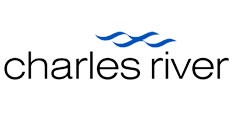Development and validation of flow cytometry assays for CGTs: a joint interview with Abigail Forrest, Byoung Koh and Fiona Campbell

This joint interview with Abigail Forrest (Charles River, NV, USA), Byoung Koh (Charles River, NV, USA) and Fiona Campbell (Charles River, Edinburgh, UK) reviews the utilization of flow cytometry assays for CGT development. Discover what our experts have to say about the advantages, disadvantages and regulatory requirements for development and validation of flow cytometry assays.

Abigail Forrest is the Associate Director of Immunology at Charles River (NV, USA), and has been in a scientific role for over 10 years. She leads a group that performs flow cytometry methods (immunophenotyping, receptor occupancy), cell-based assays (NAbs, ELISpot) and biomarker (cytokines, complement, TDAR) assays to support preclinical safety assessment for a wide range of drug modalities. Her group has extensive experience in clinical program support utilizing flow cytometry assays for the PD/PK assessments of a range of therapeutic agents including cell-based therapies and ELISpot assays for the assessment of antigen specific T-cell cytokines responses to a variety of gene therapies.

Byoung Koh is a Senior Research Scientist in the Immunology group within the Laboratory Sciences group at Charles River (NV, USA) and has been in this role for 4 years. His expertise is in the method development, validation and sample analysis for flow cytometry-based methodologies including immunophenotyping and receptor occupancy methods to support preclinical and clinical programs. Previously, Byoung served as the Assistant Director of the Fluorescence Activated Cell Sorting and Flow Cytometry Shared Resources Laboratory at the University of Nevada, School of Medicine (NV, USA) where he developed his expertise through his collaborations in various areas of basic research in physiology and cell biology. Through 15 years of research experience, Byoung identifies optimal assay designs and scientifically sound assay development/validation approaches in a field with limited regulatory guidance and industry standards to ensure the quality support of immunotherapy and cell therapy programs.

Fiona Campbell is a Study Director in the Immunology group at Charles River (Edinburgh, UK) and has been in this role for over 5 years. Fiona leads a group that performs flow cytometry assays including immunophenotyping and receptor occupancy, as well as ELISpot, Cytokine Release Assays, Haemolysis and TDAR assays to support preclinical and clinical safety assessments. Her expertise is in method development and validation, sample analysis and project management. Her group has experience in supporting clinical flow cytometry programs for the assessment of a range of therapeutics including cell-based therapies.
1. What are the advantages of flow cytometry?
Byoung: Flow cytometry became available for commercial use over 40 years ago and the technology has expanded exponentially over the past decade, both in terms of instrumentation and reagents. One major advantage of flow cytometry over other platforms is that it is capable of multiplexing a wide range of antigens allowing for analysis of multiple measurands across a variety of cellular subsets from a single sample. Flow cytometry has become an important platform in the context of cell-based therapeutics, particularly for CAR-T therapy. Flow cytometry is routinely utilized for quantifying lymphocyte subsets in blood. However, it also allows for the simultaneous detection of surface expression CAR or the target antigen specific to CD4+ and CD8+ subsets of CAR T cells pharmacokinetics and persistence, while also being able to characterize patient and disease characteristics.
2. What are the disadvantages of flow cytometry?
Byoung: As flow cytometers require frequent maintenance, multiple instruments with identical configurations are needed to create redundancy for the analysis of samples, which may have limited stability. The complex nature of the instrumentation requires technicians to undergo rigorous training to operate and troubleshoot the instruments.
Consideration should be given to the appropriate matrix (e.g. whole blood, peripheral blood mononuclear cells etc.), anticoagulant and opportunities to utilize stabilizing reagents when evaluating flow cytometry as an endpoint for a particular therapeutic. The matrix type, and any required stabilization, should be considered in the context of study sample collection and shipment logistics for the supporting clinical trials. Consistent high-quality samples are critical to the success of these assays and training may be required for individuals collecting or processing samples at the clinical sites. The choice of matrix may limit the ability to readout certain measurands and the limitations should be determined during the experimental design phase. Appropriate positive controls and disease state matrix may be difficult to source, and these requirements will need to be planned accordingly for the desired assay.
3. What are the key regulatory considerations related to flow cytometry assays?
Abigail: Flow cytometry has been used for disease diagnosis and treatment for many years but has become an increasingly important platform for biomarker assessment within the drug discovery space with the advent of cell-based therapies. Until recently, flow cytometry has been a largely unregulated platform, with existing guidance for bioanalytical method validation not fully applicable. In 2021, the H62 guideline (Validation of Assays Performed by Flow Cytometry) was released by the Clinical and Laboratory Standard Institute (CLSI), finally providing guidance for best practices specifically when utilizing this unique platform. A fit-for-purpose approach is taken throughout the document, with validation strategy selection requiring an understanding of the type of assay, context-of-use, regulatory setting/requirements and potential risk to the patient, which are key considerations since the intended use of flow cytometry assays may encompass exploratory through CDx. Fundamental topics that are discussed relate not only to the parameters that should be assessed during assay development and validation, but also consider documentation practices, panel design, staining procedures, gating strategies and cytometer performance. The H62 guideline recognizes the challenges that are associated with a technology that allows multiparameter analysis but provides a framework to standardize the approach to developing and validating assays that will generate reliable data.
4. What about the development and validation of custom assays?
Byoung: In some instances, custom assays may be required to evaluate specific end points for a program. Method development and validation approaches should be solidified as early as possible, as many flow cytometry-based assays require real-time analysis due to limited stability of samples. Typically, this should occur around a year prior to the start of the anticipated clinical trial. Advanced planning allows for preparation of reagents, including any positive controls, and defining the appropriate gating strategy and measurands to meet analysis goals and begin the method development. Defining the context-of-use of the assay, whether the flow cytometry assay is an exploratory, secondary or primary endpoint on a clinical trial or CDx is crucial when designing the method validation plan in order to project appropriate laboratory resources and reagents to execute a successful validation in a timely manner such that the assay is ready prior to patient enrollment. This should include extensive testing of sample stability. In addition, thought should be given to any necessary cross-site validations (inter-site and/or intercontinental) including the identification of those laboratories.
5. What additional assessments should be performed within a validation to ensure your method is fit-for-purpose and will mimic a clinical setting?
Fiona: Along with the extensive stability to mimic sample transport, which may not only include an extension of the stability window to, for example 96 hours from collection, but may also include assessment of temperature on stability, for example ambient temperature and storage at 2–4°C. Limit-of-detection (LOD) or limit-of-blank would also be an important consideration. There are many approaches to calculating the limit of detection. The traditional approach, mentioned during earlier measures replicates, a minimum of ten, of a blank sample. The assumption being that if the analyte is present, it will produce a signal greater than the analytical noise in the absence of the analyte. This is simple and quick but the weakness in this method is there is no evidence to confirm that a low concentration of the analyte will indeed produce a signal distinguishable from a blank.
An alternative approach utilizes samples containing a small but known concentration of analyte of interest, for example a spiking assessment. The advantage here being that objective data will compare the response of the blank with a low concentration sample determining conclusively what concentration of analyte is required to distinguish presence from absence.
6. What advice can you give regarding career development for flow cytometry scientists?
Abigail: Flow cytometry has become an important platform for biomarker assessment within the drug discovery space due to the increased numbers of immunotherapy, cell-based therapy, and vaccine drug candidates. Flow cytometry requires highly trained staff due to the complexity of the instrumentation, experimental design, and data processing for multi-parametric flow cytometry analysis. The combination of a lack of trained individuals in this field with the current demand for this skill set can lead to great opportunities for those that choose to take this career path. Scientists working within CROs are uniquely positioned to see many drug modalities as the pharmaceutical industry increasingly partners with these companies to leverage expertise and gain efficiencies within their drug development programs. The insight into the pipelines of many companies that this affords provides opportunities for scientists working in this environment to gain expertise relatively quickly compared to focusing on an individual program.
In association with:




